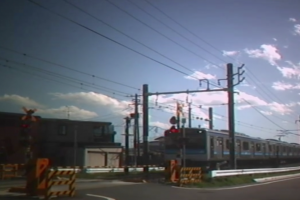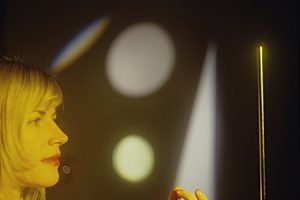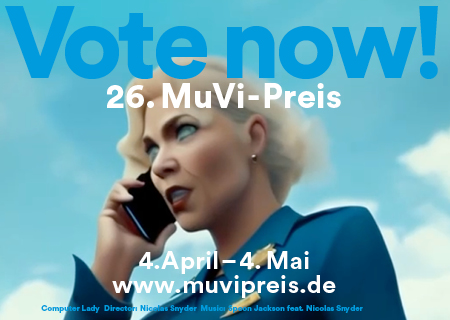When Finished Products Become Set Pieces: An Approach to Conrad Schnitzler’s Intermedia Work
When Finished Products Become Set Pieces:
An Approach to Conrad Schnitzler’s Intermedia Work By Linnea Semmerling and Stefan Schneider
“At that time, I wanted to recreate with instruments what I knew from my machinist days—this noise from the factory halls. I didn’t want to play normal scales, and couldn’t have even if I’d wanted to. That was my freedom: my total lack of ability. Sometimes it got out of hand and turned into music.”1
This is how, years later, Conrad Schnitzler described his studio recordings with the band Kluster in 1970. The group with Hans-Joachim Roedelius and Dieter Moebius had formed just one year earlier at the Zodiak Free Arts Lab cofounded by Schnitzler, a short-lived but influential project devoted to free music, improvisation, political activism, free jazz, and electron- ic experiments in Berlin’s Kreuzberg district. Rather than submit to the traditional rules of composition, Schnitzler’s aim with this constellation was to use self-constructed electro- acoustic instruments to make possible an entirely new sonic experience, one that drew on his personal experiences fleeing the bombs of World War II and later in the engine room of
a merchant ship and on the factory floor of a machine tool manufacturer. In 1970, Kluster came to the Rhineland to record their first two albums, Klopfzeichen and Zwei-Osterei, with the support of Schnitzler’s then wife, actress Christa Runge; music producer Conny Plank; and composer, church musician, and publisher Oskar Gottlieb Blarr.
The radical ambition of the “Kluster” concept marked the beginning of two decades of intensive “intermedia” work by Conrad Schnitzler. Over this period, the Düsseldorf native and Beuys student Konrad Schnitzler evolved into the video and action artist “Konrad von Berlin” (“Konrad from Berlin”) and finally into the internationally well-connected artist, composer, and musician Conrad Schnitzler. In this essay, as in the exhibi- tion Conrad Schnitzler—Manchmal artet es in Musik aus (Conrad Schnitzler—Sometimes It Gets Out of Hand and Turns into Music), we describe this period from 1970 to 1989, in which Conrad Schnitzler developed an idiosyncratic artistic practice with sounds and moving images, before he ushered in a new creative phase with the concept “Music in the Dark,” realized for the first time in 1989 at the Generator Sound Art Gallery in New York. With Music in the Dark, Schnitzler no longer ap- peared as a performer, seeking instead to offer the audience, which was seated in the dark, a concentrated, spatial experi- ence of the loudspeaker sounds he was presenting. Until then, over the course of the 1980s, he withdrew more and more fully from the performance of his work. He taught himself to read music and play the piano and replaced the associative titles of his pieces with sequential numbering. Any visual distraction or thematic association was to be avoided; the music—and Schnitzler now explicitly referred to it as music—was to stand on its own.
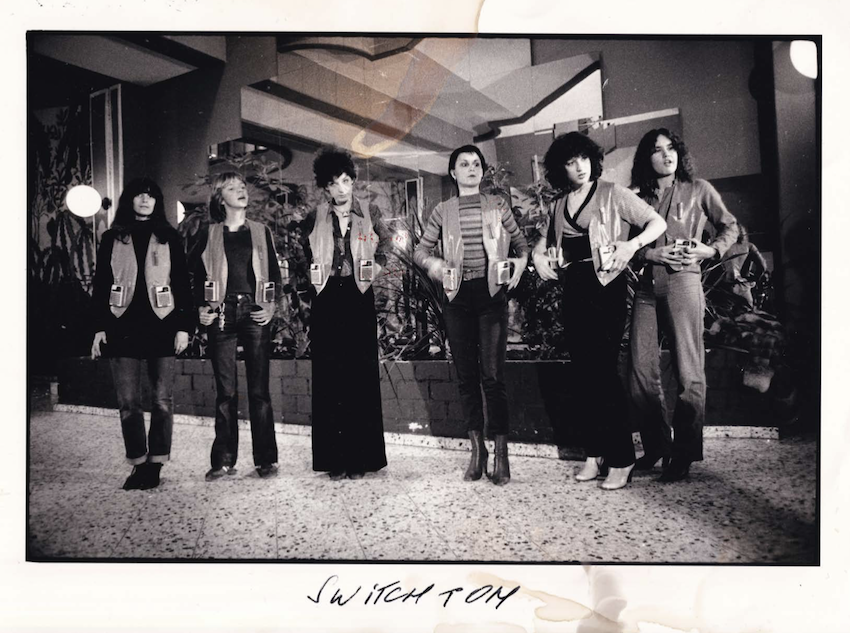
Cassette action at Berlin shopping mall Ku’damm-Karree, late 1970s. © Conrad Schnitzler Estate, photo: attributed to Thomas Bühler.
From Cassettes to Cassette Actions to Cassette Concerts
Back now, however, to the “intermedia” years. In the early 1970s, Schnitzler’s work was characterized by the search for artistic and economic independence. He moved within a chaotic landscape of usually rapidly shifting collaborations as well as artistic and private relationships. Shortly after their recordings with the groups Tangerine Dream and Kluster, the band members parted ways. As Cluster, now spelled with a c, Roedelius and Moebius continued, then as now, to make influential albums (including collaborations with Brian Eno and Michael Rother of the band NEU!), while Schnitzler continued to pursue the concept of Kluster (with a k) as a solo artist and in short-lived collaborations. He later reflected: “I left every band
I was in. […] I quickly realized that I had to be alone. I am a solitary artist and I really feel this in my heart.”2 What definitively freed him from having to work within the collective of a band was acquiring an EMS Synthi A, an analog synthesizer built into a handy suitcase. With this monophonic device, Schnitzler could generate electronic sounds himself. However, he was only able to produce them one at a time. In order to create more complex structures, he recorded individual sounds one after the other onto separate audiocassettes which he could then play back simultaneously, remixing and combining them in new and ever changing ways. Over the years, he constantly expand- ed his sonic spectrum. Thus, he incorporated a wide range of self-recorded and technically manipulated ambient sounds as well as, eventually, newer synthesizers, rhythm machines, and tape echoes into his musical vocabulary. The audiocassettes served as more than just recording media. Schnitzler also employed them as sonic material for his performances. The foundation was thus laid for his cassette work.
Along with this musical production practice, Schnitzler also defined the conditions of its performance entirely by himself. His appearances took place both in art spaces and musical performance venues, seldom following the conventional formats but always tailored to his radical conception of his music and exploring live performance possibilities. Thus, beginning in the mid-1970s, Schnitzler carried out so-called cassette actions together with Bernd Zimmer at art institutions such as the Frankfurter Kunstverein. Each of the two men wore two cassette recorders with self-constructed mixers and portable guitar amplifiers on their bodies, which turned them into walking sound sculptures. As musical material they employed, among other things, a cassette released in 1973, commonly known today as The Red Cassette. It has an audio track on each side: a rhythm track and a piece with floating, ethereal sounds. Playing them back on multiple machines simultaneously gave rise to new, usually chance combinations and layerings. On their path through exhibition spaces or even public space, the performers thus achieved the greatest possible effect with minimal musical means.
From the late 1970s onward, Schnitzler primarily appeared alone. Thus, beginning in 1977, he could be seen in a white leather suit with a self-constructed loudspeaker helmet on his head, walking along the Ku’damm in West Berlin. He played his cassettes in public through the megaphone attached to his helmet as well as offering them for sale. As long as he kept moving, the municipal authorities could do nothing to stop him. At Ars Electronica in Linz in the summer of 1980, he realized this performance with audience participation. His listeners were invited to bring cassette recorders with them and provid- ed by Schnitzler with prerecorded cassettes. They then moved through the city center together as a “wandering cloud of sound.” Schnitzler’s dream of organizing a similar action with an audience of a thousand people went unfulfilled.
Over the course of the 1980s, Schnitzler developed an increasingly complex performance practice, to which he henceforth gave the title of “cassette concert.”3 In 1980, he utilized his two self-constructed “cassette organs,” for the first time for a performance in the elevator of the Musée d’Art Moderne de la Ville de Paris. These were two handy suitcases, each with six built-in cassette recorders connected via a stereo output. Using these two suitcases and a synthesizer, he was able to perform multichannel concerts, including up to twelve cassette tracks, from a central position in the space. Throughout the decade, Schnitzler then withdrew more and more fully from the performances, which did not mean, how- ever, that there were no more performances or new composi- tions. In fact, Schnitzler regularly mailed editions with four cassettes each to New York, where Ken Montgomery presented them as eight-channel cassette concerts at his Generator Sound Art Gallery and other performance venues. A lively performance practice thus emerged around Schnitzler’s cassette concerts, which was soon taken up and further developed by Wolfgang Seidel and Jörg Thomasius in Germany, Giancarlo Tonuitti in Italy, and Serge Leroy in Paris. While at
first Schnitzler still selected “conductors” or “bandleaders” such as Ken Montgomery or Wolfgang Seidel, often sending them short scores or brief instructions regarding the concerts, he soon began to enjoy the idea that every owner of his cas- sette editions could put together own concerts. In this way, the cassette concert became a unique combination of conceptual, composed, and improvised music.
In all the phases of Schnitzler’s engagement with cassettes, the spatial distribution of sound was a central concern, whether it was achieved by the performers themselves moving during the performance or by the use of installations with eight- channel sound systems. From 1989 on, the audience of Music in the Dark was then able to focus entirely on the spatial arrangement of the sounds without any distractions. “[At the factory,] there were areas where all the sounds crossed over each other and this was what struck me the most, to hear all these sounds together. It was like you were under the influence of a drug, you worked there and it was like being in a trance, you were so inside your work, so inside the sounds, somewhere else completely.”4 The transition from sound as intervention to a situation in which sound took over the listening audience completely and commanded its rapt attention marks the moment when “intermedia” turned into music.
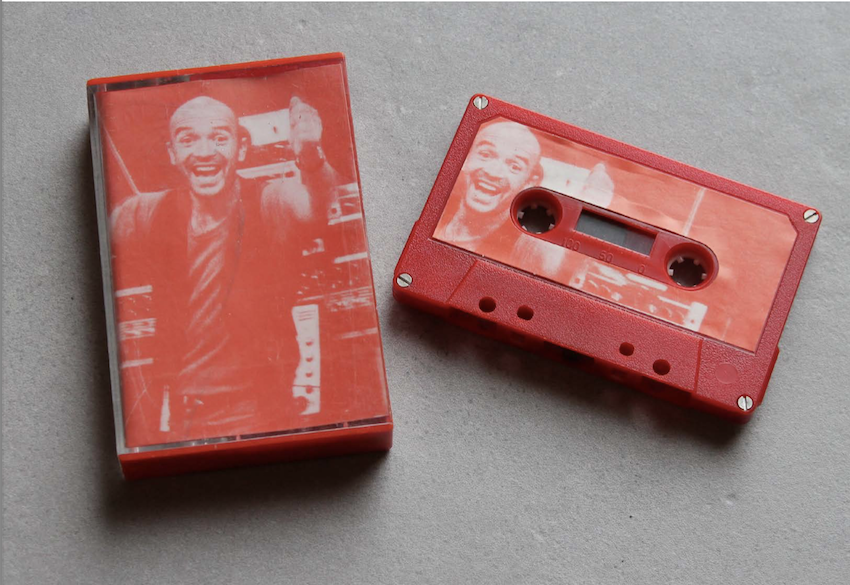
Private release The Red Cassette, 1974. © Conrad Schnitzler Estate, courtesy of Günter Herke/Minty Vinyl, photo: Stefan Schneider.
The Finished Work as Set Piece
After breaking off his studies at Kunstakademie Düsseldorf in as Set Piece 1962, Schnitzler worked in West Berlin as a monumental sculptor. Influenced by the free music scene there, as men- tioned earlier, but also by the city’s Fluxus, happening, and action artists, he abandoned his steel sculptures in the late 1960s and tried his hand at sculpting sounds. “That was when the thing with sounds really began to take off. Because as a sculptor I created environments that also made sounds.”5
One of the first environments of this kind was the installation Elektrische Eruption, Kluster Musik (Electric Eruption, Kluster Music), which Schnitlzer created in 1970 as part of the exhibi- tion series Akustische Räume (Acoustic Spaces) at Galerie Block. Radios were mounted on the gallery walls and served as amplifiers for standard, commercially available violins equipped with pickups. Visitors to the exhibition were invited to play the violins and listen to the sounds they made coming from the radios. The fact that Schnitzler used violins was certainly no accident. His father was a passionate amateur musician, but he never succeeded in imparting to his son more than the latter’s inability to play the violin conventionally. Schnitzler therefore spent a lifetime searching for his own unconventional approach to the classical instrument.6 The exploration of the relationships between sculpture and music, environment and concert, installation and action defined his work for decades.
Another project that Schnitzler carried out with gallerist René Block in the 1970s was the fifty-hour concert Work in Progress,7 for which the two of them published an expansive edition in 1974. The concert took place at Galerie Block be- tween April 12 and 27, 1974, and hence strictly speaking consist- ed of multiple daily concerts, each three to four hours long. Each exemplar of the hundred-copy edition contained a thirty-minute recording of the concert on cassette, a signed print of the “compositional scheme,” and remaindered copies of Schnitzler’s albums Schwarz (Black, 1971),8 Rot (Red, 1972/73), and Blau (Blue, 1973/74), which he had self-released in the preceding years. Legend has it that Schnitzler received a VW Beetle from the gallerist as payment for the concert and the edition. The edition shows that Schnitzler by no means took a strategic approach to releasing his music in the 1970s and ’80s. Whether his pieces were put out on vinyl or cassette, at a record label with professional distribution, as editions at galleries, or as self-releases with no institutional supportusually depended simply on the offers he had available at the time. Pieces often appeared more than once and in different versions, for example as a cassette in the early 1970s, as a video soundtrack in the late 1970s, and finally on vinyl in the 1980s.
If Schnitzler was unstrategic in his approach to releasing his music, he was similarly unstrategic in the way he moved among the structures and mechanisms of West Berlin’s art and music worlds in the 1970s. After his sporadic collaborations with Galerie Block, he repeatedly turned up on the program at Mike Steiner in the late 1970s, but there too he held himself aloof from any continuous collaboration and repeatedly emphasized his independence from commercial exploitation structures of this kind. Nevertheless, the artistic scenes surrounding these two initiatives were in fact quite formative of his work, as can be seen from his brief but inten- sive exchanges with artist friends such as Joseph Beuys, K. H. Hödicke, and Sigmar Polke from the circles of Galerie Block and artists such as Ulrike Rosenbach, Cornelia Balcerowiak, and Folke Hanfeld from the circles of Mike Steiner.
While Schnitzler designed environments and editions for Galerie Block, his work for Mike Steiner primarily consisted of videos and performances. However, his collabora- tions in the video field had actually begun much earlier, for example with his soundtracks for Ulrike Rosenbach’s videos or her documentation of his 1973 concert at Kunsthalle Köln. Indeed, as early as 1967 he contributed to K. H. Hödicke’s performance and 16mm film Zar und Zimmermann (The Czar and the Carpenter) as an actor and as composer of the soundtrack. Hödicke’s partner at the time, filmmaker Cornelia Balcerowiak, later provided footage for Schnitzler’s piece Zug (Train) with her Super-8 film of a train ride from West Berlin to Cologne in 1978; the two of them arranged the piece together. In the mid-1970s, together with Balcerowiak, Schnitzler found- ed the Intermedia Cooperative, which organized actions, performances, concerts, and exhibitions at Mike Steiner, events that Balcerowiak documented with a video or Super-8 camera. Sometimes these videos were broadcast live in the exhibition space. Later, music was added to them so that they could live on as stand-alone video works. In 1977, for example, this process yielded, among other things, Schminkfilm I (Makeup Film 1) as documentation of a makeup performance by Schnitzler at Mike Steiner; documented by Cornelia Balcerowiak and Mike Steiner, it later had music added to it by Schnitzler and survived in the program of Mike Steiner as a video work.
Between 1977 and 1980, Conrad Schnitzler joined forces with Folke Hanfeld to form Con-Lux. Con-Lux produced light and sound shows, with Hanfeld designing the projections and Schnitzler the sound. Using three machines, Hanfeld projected glass slides he had previously coated with black spray paint, in which he scratched shapes. With his synthesizer and cassette organs, Schnitzler created the soundtrack for these projections live. The two appeared in 1980 as part of the concert series that accompanied René Block’s and Nele Hertling’s exhibition
Für Augen und Ohren (For Eyes and Ears) at the Akademie der Künste. On the initiative of gallerist Mike Steiner, they also produced videos by filming their slide shows and simultane- ously playing music to go with them. In this way, audiovisual compositions such as Zug, Ballet Statique (Static Ballet), Electric Garden, and Metall (Metal) have come down to us today. It becomes apparent how freely Schnitzler handled his compositions: pieces that appeared on his first album, Con, distributed internationally on the EGG record label, had already been utilized as soundtracks for these performances and videos.9 It only makes sense, then, that different versions of Zug should have emerged from his collaborations with Balcerowiak and Hanfeld.
In addition to these collaborations, Schnitzler also experi- mented repeatedly with the medium of video himself, painting Super-8 film with enamel paint and then scraping patterns into it or scratching it. The film was then projected and recorded with a video camera, with music being added to it as it ran. Schnitzler sometimes also worked with a video camera directly, exploring his everyday environment and experimenting as he did so with light and shadow, nearness and distance, sharp and blurred focus. All of these productions seem to have been realized spontaneously and pragmatically. They are limited entirely to the technical means he had at his disposal, with no editing or any type of post-processing.
For Conrad Schnitzler, “intermedia” meant using autono- mous techniques to work between media in the truest sense of the word. Thus, he did not treat his sound and video works as finished products but as intermediate stages, set pieces, or temporary states that could unfold their potential in ever new and changing audiovisual constellations. As he put it himself: “In ‘Intermedia,’ the finished work should only ever be seen as a set piece. […] We can always cut the whole thing apart and reuse it as merely a set piece for the next ‘finished’ product. Cut something out of old tapes and turn into a new piece by adding things to it.”10 This spontaneous, associative way of working characterized Schnitzler’s treatment of audio- and videotapes alike and led to his work of the 1970s and ’80s being repeatedly criticized for its lack of consistency and absence of develop- ment. In fact, Conrad Schnitzler’s intermedial practice, with its complex constellation of activities and productions in constant dialogue with a shifting network of artists and musicians such as K. H. Hödicke, Günther Uecker, Ulrike Rosenbach, Sigmar Polke, Sven-Åke Johansson, Bernd Zimmer, Cornelia Balcerowiak, Folke Hanfeld, Wolfgang Seidel, and Ken Montgomery, has lost none of its radicality even today.

Konrad Schnitzler performing as sound worker on the streets of Berlin with AKG Harry dummy head microphone, 1970s. © Conrad Schnitzler Estate, photos: attributed to Thomas Bühler.
From Idea to Exhibition
Since we never met Conrad Schnitzler personally, our curatorial engagement with his work of the 1970s and ’80s is based on materials and reports provided by his family, his partners, and the very artistic companions mentioned above. Stefan Schneider had collaborated with Schnitzler’s Kluster cofounders Dieter Moebius and Hans-Joachim Roedelius as a musician, and the experience made him curious about Schnitzler’s work.11 Linnea Semmerling had dealt with New York’s sound art and cassette scene as a scholar, becoming aware of Schnitzler there through Ken Montgomery’s Generator Sound Art Gallery, which was dedicated to performing and exhibiting his work. When we met in Düsseldorf, we decided to delve more deeply into our shared interest in this underappreciated native of the city and came upon our first leads in the archive of the Inter Media Art Institute (IMAI). Together, we immersed ourselves for two years in the personal archives and recollections of Gisela Schnitzler, Beate Salewski, Christa Runge, Wolfgang Seidel, Ken Montgomery, Jin Kawai, and Ollis Christensen. This work did not take the form of the systematic appraisal of an artistic estate so much as it resembled a search for clues in a complex and wide-ranging network with numerous dead ends and detours.
The resulting exhibition, Conrad Schnitzler—Manchmal artet es in Musik aus (Conrad Schnitzler—Sometimes It Gets Out of Hand and Turns into Music), attempts to convey this “interme- dia” work through a variety of different formats. It begins with a collection of materials, including flyers, editions, photocopier works, and publications from the 1970s and ’80s. Visitors then enter an audiovisual installation which seeks to make it possible to experience Schnitzler’s intermedia practice. In the Seitenlichtsaal, there are seventeen videos by Conrad Schnitzler and a number of his collaborations with Cornelia Balcerowiak, Folke Hanfeld, and Mike Steiner running as loops as projections and on monitors. A soundtrack can be heard through the loudspeaker system, which visitors can pair with the corresponding video by consulting a screen mounted at the entrance. This does not mean, however, that they are meant to watch the video that matches the soundtrack! On the contrary, our aim with this type of presentation is to highlight the set- piece character of Schnitzler’s work and make it possible to experience his working method, which involved combining his sounds and video materials into ever new and changing audiovisual constellations. This is followed by a video room in which additional works by the artist as well as documentation about him are available. These are equipped with headphones for concentrated viewing.
The curatorial conception of the exhibition also includes a concert series, with cassette concerts by Conrad Schnitzler— performed by Wolfgang Seidel, Ken Montgomery, and Bernd Zimmer—as well as concerts by musicians and artists Keiko Yamamoto, Billy Roisz, Razen, Noemi Büchi, Nika Son, Tolouse Low Trax, Maria Zerfall, and Cengiz Mengüç. In this way, we seek to forge links between Conrad Schnitzler’s work and the present day, in order to bring themes such as the fluid boundar- ies and transitions between analog and digital electronics or cassette culture and its alternative distribution structures into the twenty-first century. Finally, the brochure that accompanies the exhibition presents all of these stages once again in words and images.

CONRAD SCHNITZLER: “MANCHMAL ARTET ES IN MUSIK AUS” – DÜSSELDORF, KUNSTHALLE
Katalog hrsg. von Gregor Jansen, Linnea Semmerling, Stefan Schneider & Alicia Holthausen.
Düsseldorf 2022. 19 x 27,2 cm. 176 S. mit 118 farb. Abb., broschiert – Text in dt. & engl. Sprache
___________________________________________________________________
1 Conrad Schnitzler, as quoted in Beate and Stefan Becker, “Manchmal artet es in Musik aus”—Eine lange Nacht über den Intermedia-Künstler Conrad Schnitzler, in Deutschlandfunk Kultur, 2017.
2 Conrad Schnitzler, as quoted in David Keenan, “Conrad Schnitzler: Under the Volcano,” The Wire 267 (May 2006): 30–35.
3 Our thanks to Ken Montgomery for sensitizing us to the distinction between “cassette action” and “cassette concert.”
4 See note 2.
5 Conrad Schnitzler, reported comment.
6 As early as the late 1960s, Schnitzler
played in a string quartet with his wife, actress Christa Runge; the painter and Galerie Block artist K. H. Hödicke; and the latter’s then wife, the painter Christa Dichgans. Even at this early date, they were already working with electrified instruments.
7 Also known as Black Box.
8 Dieter Moebius and Hans-Joachim Roedelius Also known as Eruption.
9 The album Con was Schnitzler’s first internationally distributed release under the name “Conrad Schnitzler,” spelled with a c. It followed a number of years
in which he had not put out any musical releases but had primarily been active in the area of performance and video.
10 See note 1.
11 Roedelius and Schneider, Stunden (2011) and Tiden (2013); Moebius and Schneider, Kunsthalle Düsseldorf (2017); all released on bureau b, Hamburg.








